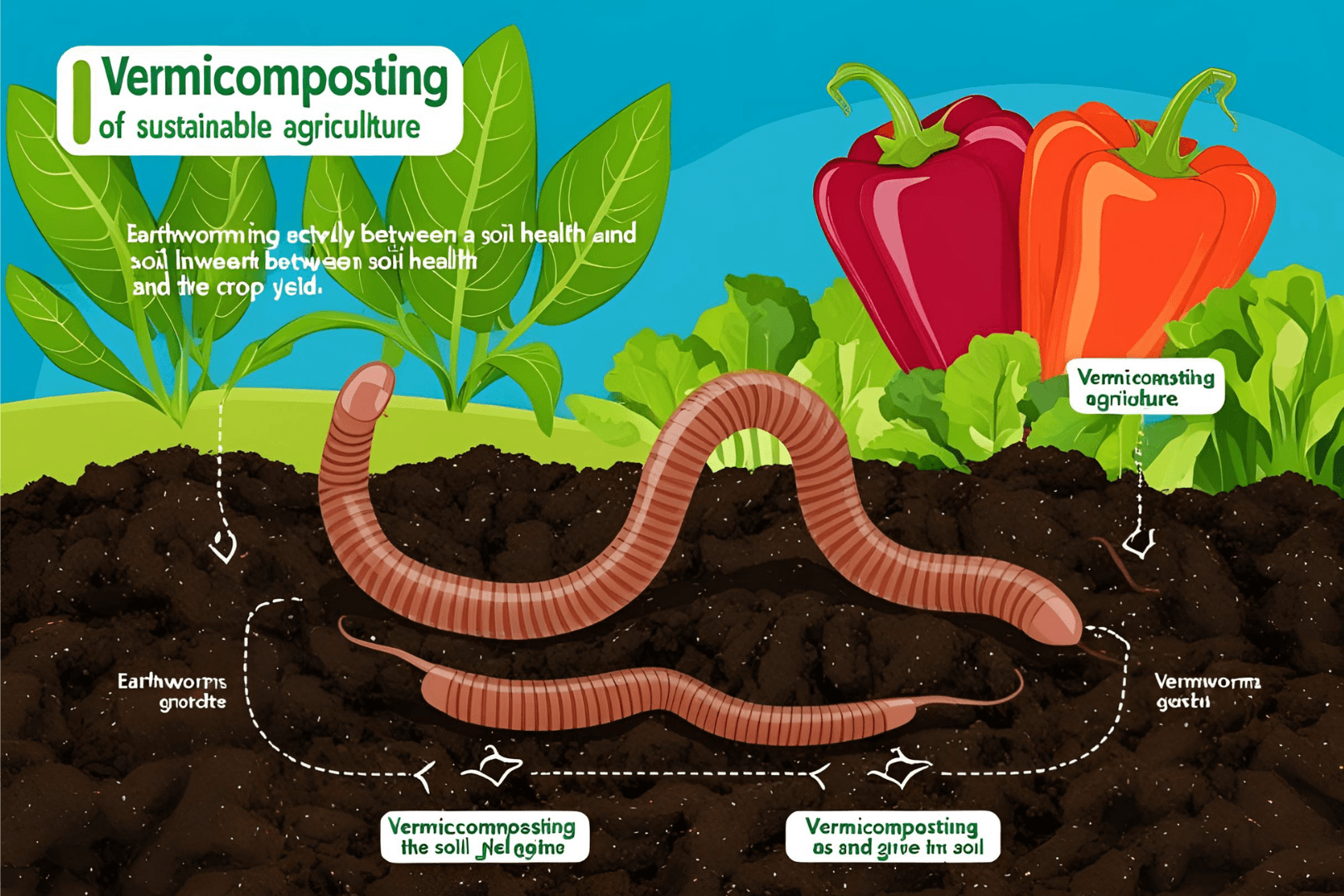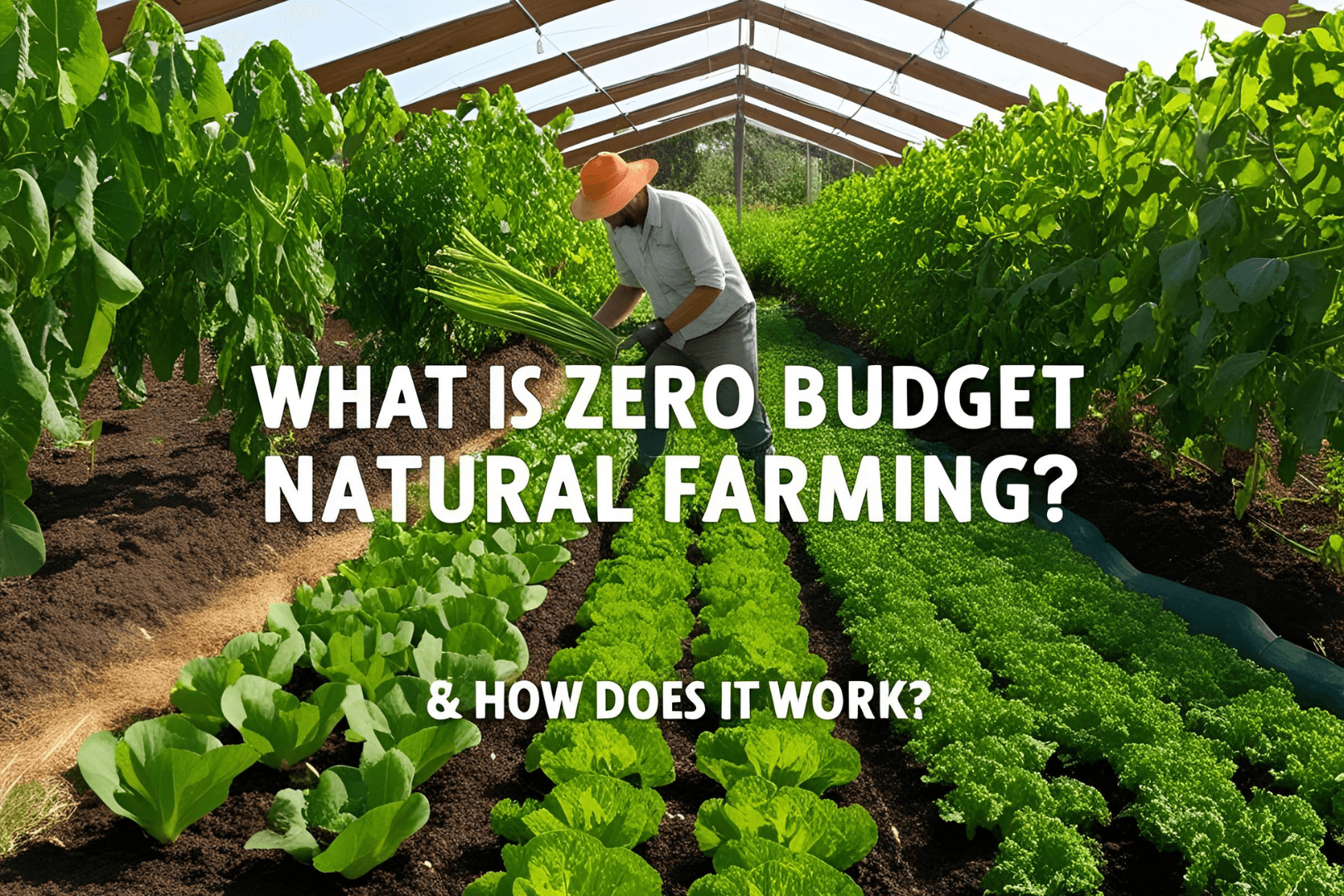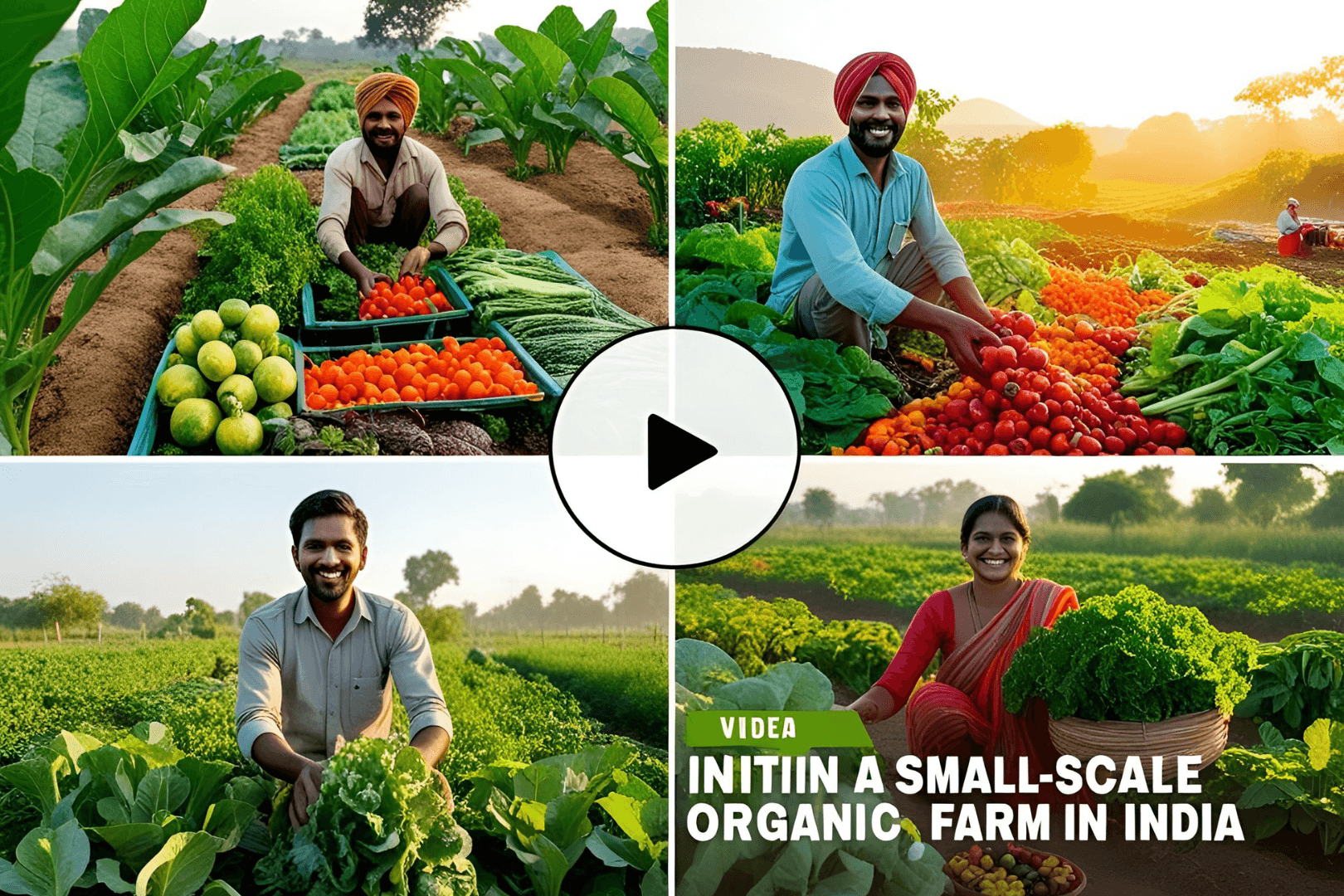Introduction
Vermicomposting, the process of using earthworms to break down organic waste into nutrient-rich compost, is gaining popularity in sustainable agriculture. This eco-friendly method enhances soil fertility, reduces waste, and promotes healthier crop growth without the need for chemical fertilizers.
1. What is Vermicomposting?
Vermicomposting is a natural composting process in which organic waste materials, such as vegetable scraps, manure, and crop residues, are decomposed by earthworms. The end product, known as vermicompost or worm castings, is a highly nutritious organic fertilizer.
Key Components of Vermicomposting:
- Earthworm Species: Red Wigglers (Eisenia fetida) and Indian Blue Worms (Perionyx excavatus) are commonly used.
- Organic Waste: Kitchen scraps, farm waste, and biodegradable materials.
- Moisture & Aeration: Maintaining 40-60% moisture and proper air circulation is essential.
2. Benefits of Vermicomposting in Sustainable Agriculture
a) Improves Soil Health & Fertility
- Enhances soil structure, aeration, and water retention.
- Rich in essential nutrients like nitrogen, phosphorus, and potassium (NPK).
- Increases microbial activity, promoting healthier plant growth.
b) Eco-Friendly Waste Management
- Reduces organic waste by converting it into nutrient-rich compost.
- Lowers methane emissions from decomposing waste in landfills.
- Supports circular farming practices by recycling farm residues.
c) Enhances Crop Productivity
- Provides slow-release nutrients, ensuring long-term plant health.
- Reduces the dependency on chemical fertilizers, lowering input costs.
- Improves plant resistance to diseases and pests.
d) Supports Water Conservation
- Vermicompost improves soil’s water-holding capacity, reducing irrigation needs.
- Reduces soil erosion and prevents nutrient runoff.
e) Cost-Effective & Sustainable
- Requires minimal investment and can be easily set up on farms.
- Generates additional income by selling vermicompost to other farmers.
- Encourages sustainable and organic farming practices.
3. How to Start Vermicomposting on Your Farm
Step 1: Set Up a Vermicomposting Bin
- Use a wooden or plastic bin with drainage holes for aeration.
- Place a bedding layer of coconut coir, shredded paper, or dry leaves.
Step 2: Add Earthworms
- Introduce red wigglers or local composting worms.
- Keep the bin in a shaded, moist area with temperatures between 15-30°C.
Step 3: Feed the Worms
- Add vegetable peels, fruit scraps, farm waste, and dried leaves.
- Avoid citrus, dairy, meat, and oily foods to maintain a healthy balance.
Step 4: Harvest the Vermicompost
- Within 2-3 months, the compost will turn dark and crumbly.
- Separate the worms and use the vermicompost for crops or sale.
4. Government Support & Business Opportunities
- NABARD Schemes: Offers subsidies and loans for organic farming initiatives.
- Agri-Entrepreneurship: Farmers can produce and sell vermicompost as a commercial business.
- Paramparagat Krishi Vikas Yojana (PKVY): Encourages organic farming and provides financial aid.
Conclusion
Vermicomposting is an essential practice for sustainable agriculture, providing numerous benefits for soil health, crop productivity, and waste management. With minimal investment, farmers can adopt this eco-friendly method to enhance yields and contribute to a greener future.
📞 Contact Us for Expert Guidance
📧 ratanmetalsjaipur@gmail.com
📞 +91 7014180458
Let’s build a sustainable farming future together! 🌿🚜




